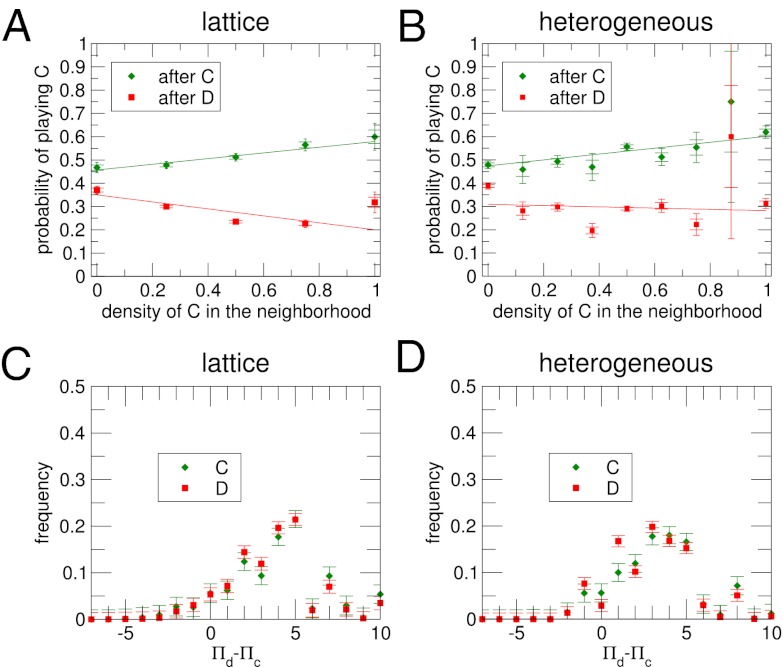Fig. 3.
Players’ behavior depends both on the level of cooperation in the neighborhood and their previous action. Frequency of cooperative actions after a cooperative/defective action conditioned to the context (fraction of cooperative actions in the neighborhood in the previous round) observed in the lattice (A) and the heterogeneous network (B). Details of the linear fits and comparison with randomizations to prove statistical significance can be found in Table S2 and SI Results and Discussion. The plots show that there is a relevant dependence on the context for subjects who cooperated in the previous round (i.e., were in a cooperative mood): the cooperation probability increased with the fraction of cooperative neighbors, similar to the conditional cooperators found in the work by Fischbacher et al. (24). However, after having defected, this dependence is less clear, and if anything, it suggest an exploiting behavior—subjects who defected are less prone to cooperate the more cooperation that they find. C and D show how subjects who cooperated or defected are distributed according to the largest payoff-per-link difference in their neighborhoods between the two actions. These plots reveal that a player’s decision to cooperate or defect was independent of the payoffs per link that they observed (information that was explicitly provided during the experiment).

